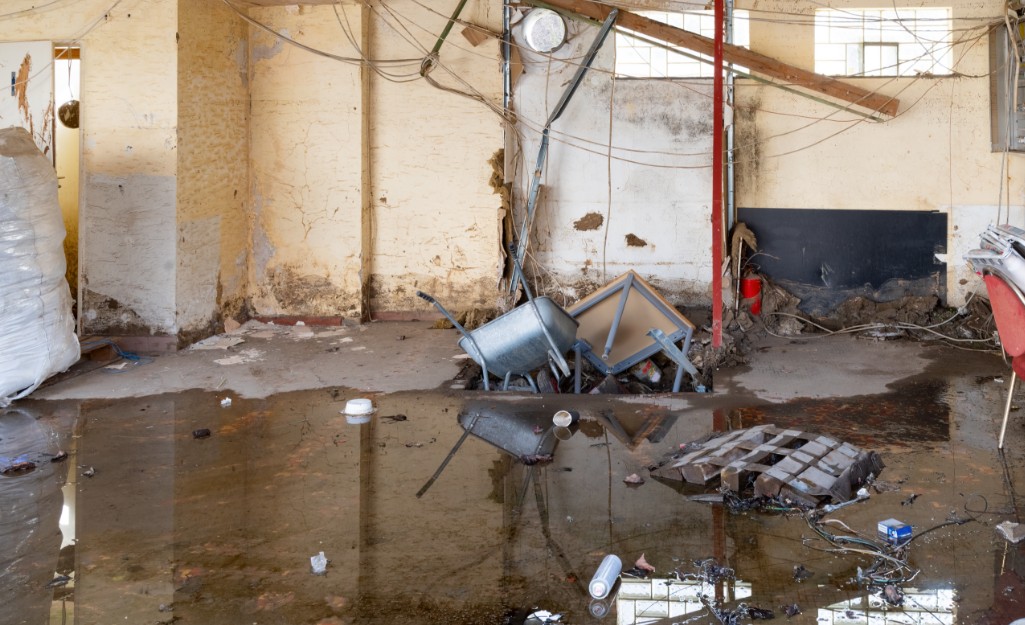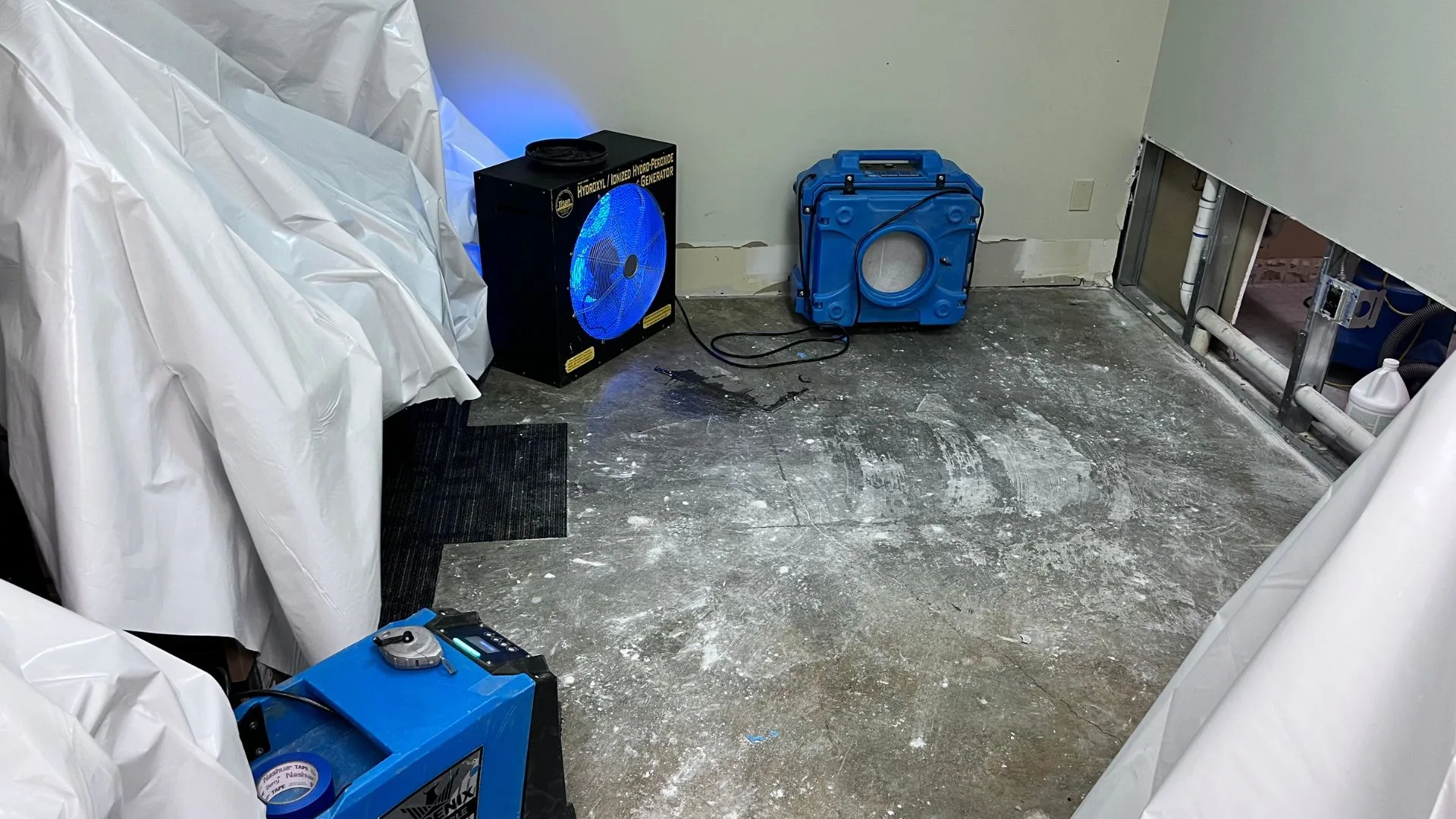Important Steps to Adhere To for Efficient Water Damage Reconstruction in your house
When faced with water damage in your house, knowing the vital actions for effective reconstruction can make all the distinction. You need to assess the damages and guarantee safety prior to tackling the trouble. Stopping the resource of water is vital, but it's simply the beginning. There's a collection of actions you have to take to safeguard your property from more issues as soon as you've handled that. Allow's discover what you ought to do following.
Analyze the Damage
When you uncover water damage in your home, the initial step is to analyze the damage completely. Beginning by determining the resource of the water intrusion. Inspect for leakages, burst pipes, or various other issues creating the problem. Next, take a look at the affected areas for noticeable indicators of damage, including mold and mildew, warping, or staining development. Don't fail to remember to look in concealed places like behind walls or under floor covering, as water can seep right into these locations unnoticed.Document the damages by taking clear photos and notes. When going over the circumstance with your insurance policy supplier or repair specialists, this will assist you. Take notice of the kind of products influenced, as different products call for different remediation methods. Ultimately, examine the extent of the damage. Is it substantial or minor? Recognizing the scope will lead you in determining whether to handle it yourself or contact the professionals for a much more extensive remediation procedure.

Ensure Security
Before you begin any remediation work, ensuring your safety and security is essential. Analyze the condition of your home. If the water's deep or if you discover electrical dangers, do not go into the location. Transform off the electricity and gas supply to stop mishaps. Use safety gear like gloves, boots, and masks to secure on your own from impurities or mold.It's essential to remain familiar with your environments; look for slippery surfaces and sharp things. Treat it as harmful waste if the water is from a sewer backup. Keep children and pets away from impacted locations to avoid exposure.Once you've taken these precautions, you can wage the remediation process. Remember, your safety and security comes initially, and if you're ever unsure, it's ideal to consult a specialist. Taking these actions will certainly assist guarantee you prepare to deal with the remediation securely and successfully.
Stop the Resource of Water
After guaranteeing your security, the next action is to stop the resource of water. Determine where the leak is originating from. It might be a burst pipeline, a malfunctioning appliance, and even heavy rain entering with a damaged roof covering. If it's a pipes issue, turn off the major water to your home to stop further flooding. For home appliances, unplug them and close off their water system valves.If the source is outdoors, like rain, attempt to divert it away from your home utilizing sandbags or other barriers. For small leakages, you may be able to use tape or a sealant temporarily up until an expert can fix it. Remember, dealing with the resource quickly is necessary to reducing damages and preventing mold and mildew development. Once you have actually stopped the water, you'll remain in a far better setting to carry on to the following action in the repair procedure.

Eliminate Excess Water
Act swiftly to eliminate excess water, as standing water can bring about more comprehensive damages and mold and mildew growth. Initially, gather your tools: a wet/dry vacuum, containers, and towels. If the water is superficial, you can use towels to take in the moisture. For much deeper water, a wet/dry vacuum cleaner is your ideal bet. Ensure to empty the vacuum regularly to stay clear of overflow.If the water is contaminated, like from a sewage backup, put on protective equipment, consisting of masks and gloves, to maintain yourself risk-free. As soon as you have actually eliminated as much water as feasible, look for concealed pockets of dampness in corners and under furniture, as these can nurture mold.Don' t forget to turn off electric home appliances and power outlets in damp locations to stop dangers. This first action is important in decreasing damages and establishing the stage for a successful restoration procedure.
Dry and Dehumidify the Location
As soon as you have actually eliminated the excess water, it's important to completely dry and evaporate the location extensively. Beginning by utilizing dehumidifiers effectively to pull wetness out of the air and stop mold development. Watch on moisture levels to guarantee the room dries out entirely.
Get Rid Of Standing Water
To efficiently tackle water damage, you require to concentrate on getting rid of standing water as promptly as possible. Beginning by collecting necessary devices, like a wet/dry vacuum or a pump, relying on the quantity straight from the source of water. A vacuum cleaner should do the technique if the water is shallow. For larger quantities, a pump is more effective. While working, ensure to use protective equipment to keep on your own risk-free from pollutants. As you remove the water, pay attention to hidden areas like under furniture or in corners where water might collect. Your space will start to dry out when you've eliminated the majority. This step is important, as remaining water can lead to mold and mildew development and more comprehensive damages.
Use Dehumidifiers Efficiently
How can you effectively make use of dehumidifiers to dry and dehumidify your room? Beginning by positioning your dehumidifier in the most afflicted area, ideally where water damages is most serious. Make certain to shut all doors and windows to create a closed atmosphere. Turn on the dehumidifier and established it to the proper moisture level, typically around 30-50%. Vacant the water collection storage tank regularly, or consider making use of a model with a continual drain alternative for comfort. Preferably, utilize followers to boost airflow, helping the dehumidifier job extra effectively. Keep the dehumidifier running till you're confident that the area is thoroughly dried out, protecting against mold development and added damage (Water Damage Restoration St George UT). This step is vital for reliable water damage remediation
Monitor Humidity Levels
Tracking humidity degrees is important during the drying out procedure, as it assists assure your room remains free from excess dampness. Purchase a reliable hygrometer to track moisture precisely. Ideally, you desire to maintain degrees between 30% and 50%. If moisture readings rise above this variety, you may need to change your followers or dehumidifiers to boost airflow. Examine the analyses frequently, particularly in locations susceptible to moisture, like bathrooms or basements. If you notice persistent high humidity, think about enhancing ventilation or utilizing extra dehumidifiers. Remaining on top of these degrees not just speeds up the drying out procedure yet likewise protects against mold and mildew development, guaranteeing your home keeps secure and comfy.
Clean and Disinfect Affected Surfaces

Bring back and Repair Your Home
After cleansing and decontaminating the influenced locations, it's time to restore and fix your home. Begin by examining the damage. Check for architectural problems, like compromised floors or wall surfaces, and resolve any type of necessary repairs. Changing damaged drywall or floor covering is crucial for both visual appeals and safety.If your furnishings or items were influenced, consider whether they can be salvaged or require replacement. Clean or properly bring back things where possible.Next, paint wall surfaces and touch up any type of locations that need focus. This not only boosts appearance yet additionally secures surfaces from future water damage.Don' t neglect to inspect your pipes and devices for leaks, ensuring whatever's working appropriately. Think about mounting a dehumidifier to avoid future wetness issues. By taking these actions, you'll recover your home to its previous glory and develop a much safer living environment.
Often Asked Questions
Just How Long Does Water Damage Reconstruction Usually Take?
Water damages remediation normally takes anywhere from a few days to a number of weeks, relying on the extent of the damages (Water Damage Cleanup). You'll intend to analyze the situation rapidly to minimize additional difficulties and guarantee appropriate reconstruction
Will My Insurance Coverage Cover Water Damage Reconstruction Prices?
Your insurance coverage may cover water damages reconstruction costs, but it depends on your policy. Check your coverage details and contact your insurance coverage representative to clarify what's consisted of and what you need to file an insurance claim.
Can I Deal With Water Damages Restoration Myself?
You can handle water damage repair on your own, yet it's vital to evaluate the scenario initially. You might want to call my response experts if it's substantial. Always focus on security and ensure you've got the right tools.
What Are the Indicators of Hidden Water Damage?
You might discover signs of surprise water damages like deformed walls, musty odors, or discoloration. If your floors really feel mushy or you place mold, it's time to investigate even more prior to the circumstance aggravates.
Exactly How Can I Avoid Future Water Damage in My Home?
To avoid future water damage in your home, you should on a regular basis evaluate pipes, seal fractures, keep gutters, and guarantee correct water drainage. Mounting a sump pump and wetness obstacles can also assist maintain your room dry. When you find water damage in your home, the very first action is to assess the damage extensively. Act swiftly to remove excess water, as standing water can lead to more comprehensive damage and mold and mildew growth. To effectively tackle water damages, you need to focus on removing standing water as swiftly as feasible. As you remove the water, pay focus to hidden locations like under furniture or in corners where water could accumulate. Water damage remediation commonly takes anywhere from a few days to numerous weeks, depending on the level of the damages.